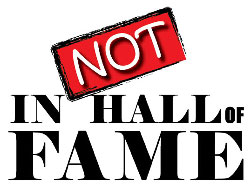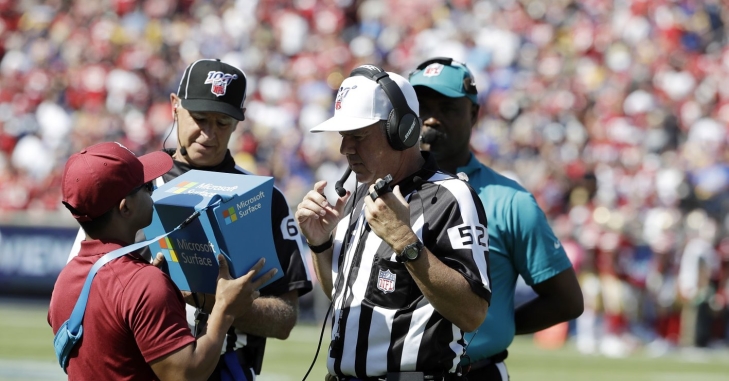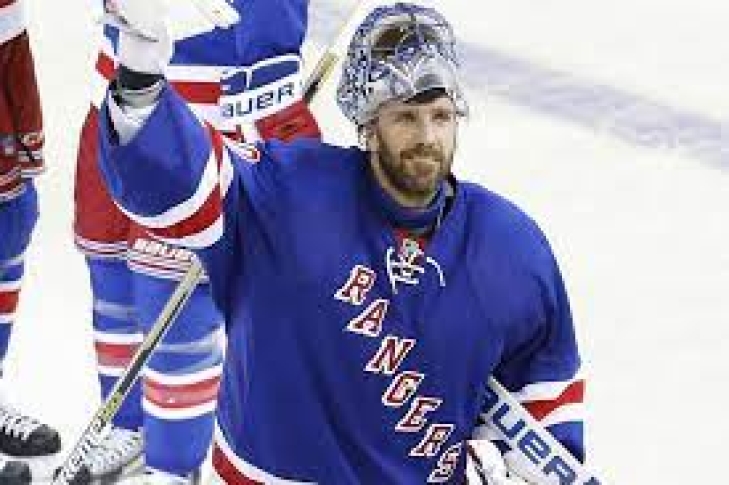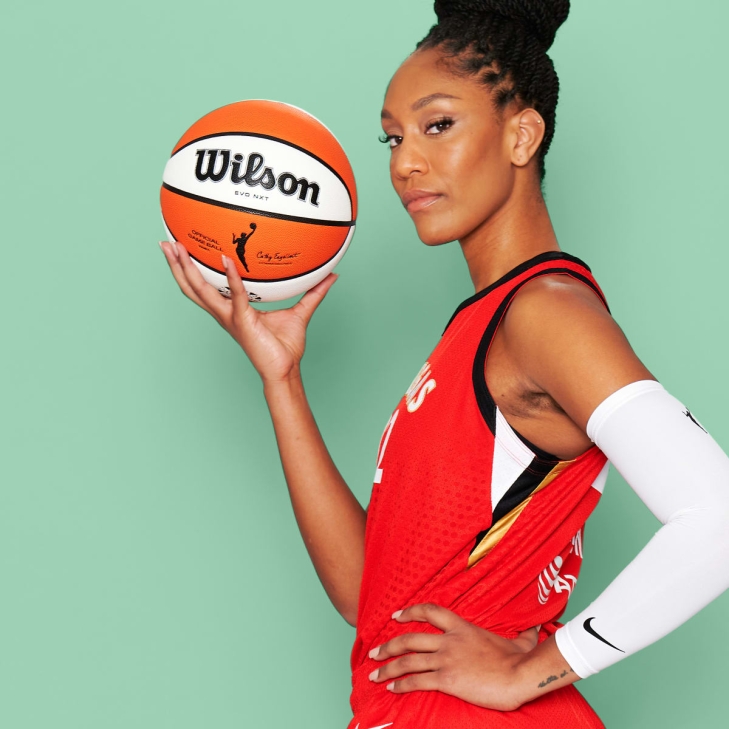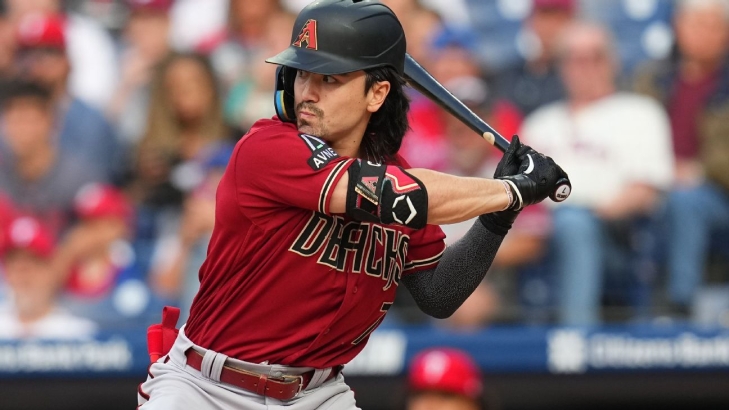
Committee Chairman
The Impact of Technology in American Football: From Instant Replay to Virtual Reality Training
American football is considered one of the sports that gradually evolved from the regular games of football and rugby, except that in this game, players are allowed to touch the ball and carry it with their hands. American football is one of the largest sports that has become widespread. It is popular in the United States of America, and the presence of professional leagues such as the NFL evidences this. This league attracts the best players worldwide, and the popularity of NFL tickets is not limited to the USA. This game is famous in Canada, the UK, Germany, and other countries around the world.
The latest technology in American football
Playing American football is like wrestling, but with shoulder pads instead of shields to fend off rivals. This sport requires equal intelligence and strength, as you have to outwit your opponent while being careful not to be attacked. Practice is critical to success in this area. It's not just where you learn to work with your teammates. It's also where you perfect your movements.
Next, we will discuss advanced technologies that have improved American football.
1. Smart ball
Smart ball has a variety of sensors, allowing any player to understand the mechanics of their shots and make adjustments to improve their accuracy. The sensors in the ball have an accelerometer, a gyroscope, and Bluetooth. Together, these sensors can measure the speed and rotation of the ball, as well as the direction and rotation of the ball, and allow the ball to communicate with a smartphone or tablet for data analysis.
By connecting to a smartphone or tablet, anyone on the line (your coach, friend, or parent) can get real-time feedback on your shots and gameplay. Moreover, while sensors let you focus on areas that need attention, the app lets you track your improvements over time.
2. A virtual reality
One technology that is gaining popularity in soccer practice is virtual reality (VR). VR allows you to experience a realistic simulation of game scenarios and play them in a safe and harmonious environment. It can be a good option to improve your skills and prepare for different real-world gaming situations. For a comprehensive approach to training, incorporating a playbook can further enhance your understanding and strategy.
When you wear a VR headset, you enter a virtual playground and can practice challenges, make decisions, and learn other skills just like in a real playground, but without the risk of being removed. This can be especially helpful for players who are recovering from injuries and cannot participate in traditional training.
Another important aspect of virtual reality is that it helps visualize and mentally prepare for the various challenges expected in matches. In VR, you can imagine yourself in match-like scenarios, which will help you be more confident and prepared when you enter the field. In general, VR technology is becoming more accessible and developed, so we expect a boom in the next few years to use it in all dynamically developing areas of life, including football.
3. Player tracking systems
There are many gadgets for sports enthusiasts, and trackers are becoming more popular with athletes looking to gain a competitive edge. They can be cutting-edge tools for every player looking to take their playing experience to the next level.
The Catapult is one of the most popular wearable performance trackers that most players use today. It looks like a vest that tracks data like this:
- Speed and distance;
- Measures your fatigue;
- Measures the actual load of your multidirectional movements on the field.
The system can help you identify what you need to improve and make recommendations on how to make those improvements. It can also advise when to keep pushing and when to back off to reduce the risk of a preventable injury. This information is used to help coaches and performance professionals improve their players' training and recovery to prevent injury and improve overall performance.
4. Interaction systems
You can use one of the many workout apps to get a better body and improve your physical performance. However, a footballer knows that the ability to react quickly to an opponent's actions can mean the difference between winning and losing a match. That's why it's so essential to improve your reaction time.
BlazePod is an example of a reaction system that uses light to challenge and enhance:
- Reaction time;
- Response accuracy;
- The constancy of the reaction.
The portable device allows players to train their reaction speed in a fun way. The BlazePod system consists of several small, portable lights that can be placed in different field areas. The lights can be programmed to flash at other times, and you have to respond quickly and accurately to the flashing lights. By training with the reaction system, you will learn how to quickly and accurately react to the actions of your opponents, which will give you a competitive advantage on the field.
5. HIT Virginia Tech System
Developers at Virginia Tech University have developed a system to control how hard a football player gets hit in the head. The system consists of several sensors (acceleration sensors), a microprocessor, and a radio frequency transceiver unit that reports data from the playing field to the coach's computer. There are eight helmets in the system, and 38 different players alternately wear them.
This system explores the relationship between what kind of acceleration precedes a concussion. The university has been using the system since the start of the football season. Each helmet has six acceleration sensors that trigger when a threshold load of 10 G is exceeded in one of six directions (forward-backward, left-right, up-down). Overloaded data is sent to the computer. The helmet also has 128 KB of flash memory.
American football is not the only example of the fact that the latest technologies help develop and improve this sport and its players.
The Hockey Hall of Fame names the 2023 Class
It is a huge day for us at Notinhalloffame.com with the announcement of the newest members of the Hockey Hall of Fame, featuring seven new inductees,
The unquestionable headliner is former Goalie, Henriq Lundqvist. The Swedish netminder played his entire NHL career with the New York Rangers, where he won 459 Games, which is currently fifth all-time. The 2012 Vezina Trophy winner backstopped the Rangers to a Stanley Cup Final in 2014. Nicknamed “The King”, Lundqvist had copious success on the International level, winning a Gold Medal at the 2006 Games, and Silver in 2014.
Caroline Oullette is in select company as one of the few people to win Gold in four consecutive Olympic Games (2002, 2006, 2010 & 2014), and she earned Gold Medals in six World Hockey Championships (1999, 2000, 2001, 2004, 2007 & 2010). This has been a special year for Oullette, who last month was inducted into the International Ice Hockey Federation Hall of Fame.
Tom Barrasso, who was known mostly for his time with the Buffalo Sabres and Pittsburgh Penguins, won the 1984 Calder and 1985 Vezina Trophy. He had a lifetime record of 369-277-86 over 19 seasons.
The third Goalie to enter is Mike Vernon, who won two Stanley Cups, one with Calgary (1989) and Detroit (1997). Vernon won the Conn Smythe in the latter Cup win and had a career mark of 385-274-92.
Prior to his selection, Pierre Turgeon held the distinction of having the highest Points (1,327) of any player not in the Hockey Hall of Fame. The 19-year veteran is also a former Lady Byng winner.
Ken Hitchcock enters the Hall of Fame as a Coach. Currently fourth in Wins (849), Hitchcock led the Dallas Stars to a Stanley Cup Championship in 1999.
The final entrant is Pierre Lacroix, who joins the Hall as a builder. The former player agent became the General Manager of the Quebec Nordiques in 1984 and was with them when they relocated to Colorado. He oversaw the Avalanche’s Stanley Cup wins in 1996 and 2001.
We will now begin work on revising our Notinhalloffame.com list of those to consider for the Hockey Hall of Fame. Look for that next month.
We here at Notinhalloffame.com would like to congratulate the newest members of the Hockey Hall of Fame.
June 20 Update: Notinhalloffame WNBA Cup Standings.
Including this season, we have awarded the NIHOF NBA Cup by awarding the best five players in the game with descending points, 5-4-3-2-1. Obviously, we can’t watch all the games, but box scores and write ups give an approximate idea as to who were each game’s top five.
This year, we decided to the same for the WNBA.
The top players for the WNBA NIHOF Cup are not always the best in the league, as injuries keep players out of games, and a premium on staying healthy can help pile up points. It also does not hurt to be a top player on an average or mediocre team, as they can amass Cup points easier that elite players on loaded squads.
Please remember, that this is NOT necessarily who we think were the best players this year, and does not reflect overall consistency, but snapshots of each game.
Treat this the way did, as a fun process and more of a compilation of temporary statistical domination.
So, like we said the last two years, WNBA players! Get your agents to work winning this into your contracts!
This is our second update.
Here are the 2023 top ten rankings for the WNBA NIHOF CUP:
1. Alyssa Thomas: Connecticut Sun, Forward: (#1 Last Week)
43 PTS, 12 Games, 4.08 Cup Points per Game, 15.0 PPG, 10.2 RPG, 7.7 APG, 2.0 SPG, 0.4 BPG, 20.8 PER, 2.1 WS.
Thomas remains a surprise leader, as she is the three-time All-Star is on the wrong side of 30, but is posting the best numbers of her career. Her traditional metrics are the significantly higher than in previous years, and she is averaging a double-double. She is at present third in Rebounds (10.2) and second in Steals per Game (2.0), and in pure numbers, she is first in Rebounds (122), Assists (92) and Steals (24). It will be interesting to see if she can hold the top spot, as many of the stars below her have games in hand. Our bet is that it will be a tough ask, and this rank won’t last.
2. Nneka Ogwumike: Los Angeles Sparks, Forward: (#5 Last Week)
40 PTS, 10 Games, 4.00 Cup Points per Game, 19.6 PPG, 9.8 RPG, 3.8 APG, 1.6 SPG, 0.7 BPG, 27.5 PER, 2.1 WS
The 2018 MVP has never finished over 20 Points per Game but Ogwumike is close right now. Currently, Ogwumike eighth in Points (19.6) and fourth in Rebounds per Game (9.7), while also being sixth in PER (27.5).
3. A’Ja Wilson: Las Vegas Aces, Forward: (#2 Last Week)
39 PTS, 11 Games, 3.56 Cup Points per Game, 18.5 PPG, 9.1 RPG, 2.2 APG, 1.5 SPG, 2.2 BPG, 29.9 PER, 2.7 WS.
Wilson is the reigning and two-time MVP, and is third in Blocks (2.2), seventh in Rebounds (9.1) and tenth in Points per Game (18.5). She is also third in PER (29.9).
4. Satou Sabally: Dallas Wings, Forward: (#3 Last Week)
36 PTS, 11 Games, 3.27 Cup Points per Game, 20.9 PPG, 11.0 RPG, 3.1 APG, 1.5 SPG, 0.4 BPG, 23.3 PER, 1.9 WS
Like Alyssa Thomas, Sabally is averaging a double-double but is nearly doubling last year’s metrics. The fourth-year player is currently leading the WNBA in Rebounds (11.0) and is fourth in Points per Game (20.9).
5. Jackie Young: Las Vegas Aces, Guard: (#7 Last Year)
35 PTS, 11 Games, 3.18 Cup Points per Game, 20.8 PPG, 4.2 RPG, 2.8 APG, 1.8 SPG, 0.2 BPG, 29.1 PER, 2.8 WS.
Young is fifth in PER (29.1) and is sixth in Points per Game (20.8). The Ace’s Guard has proven herself as one of the top shooters in the league, as she is second True Shooting Percentage (.716) and is the league-leader in Effective Field Goal Percentage (.679).
6. Breanna Stewart: New York Liberty, Forward: (#5 Last Week)
33 PTS, 10 Games, 3.30 Cup Points per Game, 23.9 PPG, 10.8 RPG, 4.0 APG, 1.7 SPG, 2.1 BPG, 33.6 PER, 3.1 WS
Stewart is on fire thus far in her first season in New York, and is averaging a double-double; a mark she has never finished a season with. She is the WNBA leader in PER (33.6), and is second in both Points and Rebounds per Game. This is incredible!
7. Napheesa Collier: Minnesota Lynx, Forward (#6 Last Week)
32 PTS, 11 Games, 3.09 Cup Points per Game, 20.5 PPG, 7.0 RPG, 2.5 APG, 1.5 SPG, 1.1 BPG, 25.1 PER, 1.6 WS
The 2019 WNBA Rookie of the Year is sixth in Points per Game (20.5) and third in Steals per Game (1.8).
8. Elena Delle Donne: Washington Mystics, Forward:
30 PTS, 10 Games, 3.00 Cup Points per Game, 18.4 PPG, 6.2 RPG, 2.6 APG, 0.9 SPG, 0.3 BPG, 22.8 PER, 1.7 WS
The future first ballot Hall of Fame inductee is currently tenth in PER (28.1).
9 (TIE). Cheyenne Parker: Atlanta Dream, Forward:
27 PTS, 10 Games, 2.70 Cup Points per Game, 15.8 PPG, 7.9 RPG, 1.7 APG, 1.7 SPG, 0.9 BPG, 21.6 PER, 0.9 WS
A nine-year veteran, Parker is putting up the best metrics of her career and is the present leader in Offensive Rebound Percentage (12.8).
9 (TIE). Jewell Loyd: Seattle Storm, Guard:
27 PTS, 9 Games, 3.00 Cup Points per Game, 25.4 PPG, 4.2 RPG, 3.7 APG, 0.6 SPG, 0.8 BPG, 22.1 PER, 0.7 WS
Loyd is the current leader in PPG (25.4), though this has not generated a lot of wins for Seattle. She is also the league leader in Usage Percentage (33.5).
Phoenix’s Brittney Griner and Dallas’ Arike Ogunbowale have fallen off the top ten.
Our next update will be on the June 27.
June 19 Update: Notinhalloffame MLB Cup Standings.
It is with great pleasure that we continue the third annual Notinhalloffame MLB Regular Season Cup, and let us explain how this works:
With every single regular season game, we anointed the best five players in the game with descending points, 5-4-3-2-1.
We knew the following:
- The top players for the MLB NIHOF Cup are not always the best in the league, as injuries keep players out of games, and a premium on staying healthy can help pile up points. It also does not hurt to be a top player on an average or mediocre team, as they can amass Cup points easier that elite players on loaded squads.
- In Baseball, it is more common than in Basketball and Hockey for a player to accrue points with a single Home Run in a game, and overall favors position players. Starting Pitchers have a hard time with approximately 30-35 Starts and throwing less innings than in previous generations. This also is true for closers, which is not made for this process.
- Please remember, that this is NOT necessarily who we think were the best players this year, and does not reflect overall consistency. Treat this the way did, as a fun process and more of a compilation of temporary statistical domination.
At present 847 (up from 827 last week) Players have generated at least one Cup Point.
So, MLB players! Get your agents to work winning this into your contracts!
This is the seventh update, with standings as of the morning of June 19.
1. Shohei Ohtani: Los Angeles Angels, Designated Hitter & Pitcher: (Ranked #1 last week)
115 Cup Points, 72 Games, 1.60 Cup Points per Game, 24 Home Runs, 58 Runs Batted In, 10 SB, .300/.384/.632, 4.9 bWAR & 6-2, 3.29 ERA, 105 SO, 1.049 WHIP.
The Notinhalloffame Cup is built for Ohtani, who can compile points in two different avenues; the only one who can do so. Ohtani has been brilliant this week, and the chasm between the top spot and second spot has never been higher. He is off to a good pitching start, leading the AL in H/9 (5.596) and is second in Strikeouts (105). With his bat, Ohtani has taken over the American League lead in Home Runs (24), Runs Batted In (58) and Total Bases (175). The AL MVP is his to lose.
2. Ronald Acuna: Atlanta Braves, Outfield: (Ranked #2 Last Week)
95 Cup Points, 72 Games, 1.32 Cup Points per Game, 15 Home Runs, 45 Runs Batted In, 30 SB, .325/.403/.561, 3.6 bWAR.
Acuna leads all National League batters in Stolen Bases (30) and is second in Runs Scored (63), and is second in bWAR (3.6). He is in the top sixth in all three Slash Line components, and is second in OPS (.964).
3. Jorge Soler: Miami Marlins, Outfield & Designated Hitter: (#4, Last Week)
81 Cup Points, 68 Games, 1.19 Cup Points per Game, 20 Home Runs, 42 Runs Batted In, 1 SB, .260/.366/.553, 1.6 bWAR.
Soler is playing more and more at DH this year, but he is providing the Marlins incredible offense. He is second in NL Home Runs 209), and sixth in Slugging (.553), and seventh in OPS (.919).
4. Corbin Carroll: Arizona Diamondbacks, Outfield: (Ranked #4, Last Week)
79 Cup Points, 62 Games, 1.16 Cup Points per Game, 15 Home Runs, 38 Runs Batted In, 19 SB, .305/.386/.589, 3.6 bWAR.
Carroll is running away with the National League Rookie of the Year Award, and it is only June! At present, the young Outfielder is leading the National League in bWAR (3.6), Offensive bWAR (3.6), Slugging (.589), OPS (.975) and OPS+ (164). Carroll is also in the top ten in Batting Average (.305), Stolen Bases (19) and Hits (75).
5. Juan Soto: San Diego Padres, Outfield: (Ranked #3, Last Week)
77 Cup Points, 65 Games, 1.12 Cup Points per Game, 11 Home Runs, 34 Runs Batted In, 5 SB, .252/.408/.459, 2.6 bWAR.
Soto is still the National League leader in Walks (64) and is fourth in OBP (.408). He is also eighth in OPS (.853).
6. Rafael Devers: Boston Red Sox, Third Base: (Ranked #6 Last Week)
76 Cup Points, 57 Games, 1.07 Cup Points per Game, 17 Home Runs, 57 Runs Batted In, 0 SB, .245/.307/.498, 1.2 bWAR.
Devers holds strong on at #6 and is currently third in the AL in RBIs (57) and third in Home Runs (17).
7. Marcus Semien: Texas Rangers, Shortstop: (Ranked #8, Last Week)
73 Cup Points, 71 Games, 1.02 Cup Points per Game, 10 Home Runs, 54 Runs Batted In, 7 SB, .279/.342/.466, 3.1 bWAR.
Semien is having an outstanding 2023, though he has substantially cooled off in the last two weeks. He is the current AL leader in Runs Scored (59) and is third in bWAR for Position Players (3.1).
8. Luis Arraez: Miami Marlins, Second Base: (#9, Last Week)
72 Cup Points, 67 Games, 1.07 Cup Points per Game, 2 Home Runs, 33 Runs Batted In, 1 SB, .388/.440/.480, 2.7 bWAR.
Arraez is flirting with a .400 Batting Average and he is currently the National League leader in Hits (97), Batting Average (.388) and On Base Percentage (.440). He also has a very impressive Slugging Percentage (.480) for a player with only two Home Runs.
9. Aaron Judge: New York Yankees, Outfield: (Ranked #7, Last Week)
70 Cup Points, 49 Games, 1.43 Cup Points per Game, 19 Home Runs, 40 Runs Batted In, 3 SB, .291/.404/.674, 1.9 bWAR.
A toe injury kept Judge out of the lineup the last two week, thus he tumbled four spots on the NIHOF Cup leaderboard. Last year’s NIHOF Cup winner and Home Run leader is still leading the AL in Slugging (.674), OPS (.674), OPS+ (192) and is second in Home Runs (19).
10. Matt Olson: Atlanta Braves, First Base: (Ranked #6 Last Week)
68 Cup Points, 73 Games, 0.93 Cup Points per Game, 20 Home Runs, 51 Runs Batted In, 1 SB, .233/.348/.502, 1.3 bWAR.
Olson makes it to the top ten giving Atlanta two members in the top ten. He is second in both Home Runs (20), RBIs (51) and is forth in Walks (47)
Houston’s Yordan Alvarez fell out of the top ten.
Our next update will be the afternoon of June 26.
